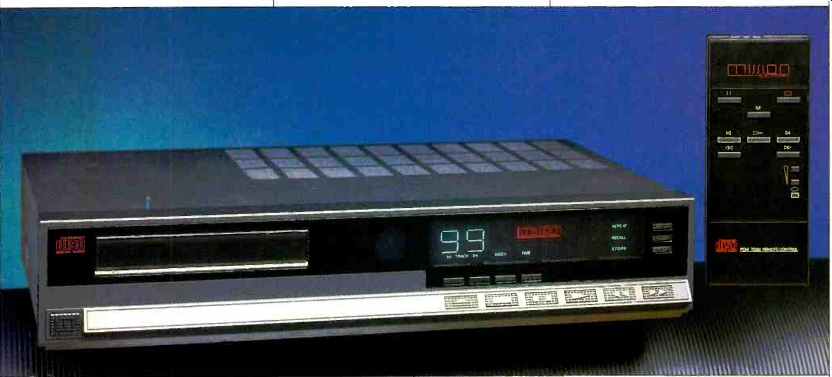
MANUFACTURER'S SPECIFICATIONS:
Frequency Response: 20 Hz to 20 kHz.
THD: 0.003% at 0 dB, 0.008% at -10 dB.
CCIF IM: 0.002% at 0 dB, 0.003% at - 10 dB (19- and 20-kHz signals).
S/N: 96 dB.
Channel Separation: 90 dB.
Channel Balance: ± 0.2 dB.
Disc Fault Correction: 900 microns for faults in data layer.
Mean Track-Access Time: Less than 2 S.
Range of Electronic Volume Control: 0 to -63 dB.
Output Level: 2.0 V rms at 1 kHz, 0 -dB level.
Dimensions: 16 15/16 in. W x 3 5/16 in. H x 11 13/16 in. D (43 cm x 8.5 cm x 30 cm).
Weight: 11 lbs. (5 kg).
Price: $999.
Company Address: 5985 Atlantic Dr., Unit 6, Mississauga, Ont., Canada L4W 1S4.
As is true of so many CD players manufactured in Europe, this latest Mission unit-by far the best player the U.K. based company has offered thus far--is based upon a Philips transport and digital-to-analog conversion. Its performance and features are not entirely unlike those of the highly regarded Magnavox CDB650 player (which I evaluated in the March 1987 issue), but this is not just a repack aged Philips unit. Since Mission builds its own chassis, there are visible differences in cosmetics, control layout, and the display. By far the greatest differences, however, lie in Mission's proprietary implementation of the analog filter and output sections, as well as their error-correction logic algorithm. The Mission PCM-7000 is also one of the new breed of players that employs true 16-bit, four-times over-sampling. Digital-to-analog conversion is accomplished by means of a twin converter on a selected single chip, which exhibits extremely linear performance.
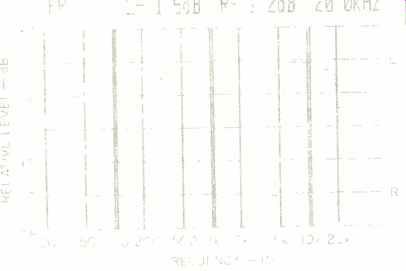
Fig. 1-Frequency response, left (top) and right channels.
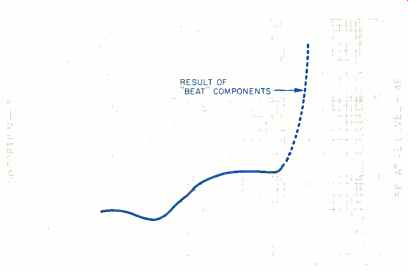
Fig. 2-THD vs. frequency at 0-dB recorded level.
Dashed portion of line shows out-of-band "beat" components rather than true distortion.
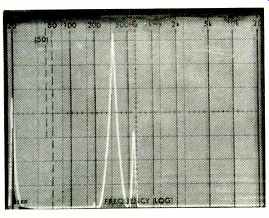
Fig. 3--Spectrum analysis of reproduced 20-kHz test signal from 0 Hz to
50 kHz.
Mission's experience with high-quality amplifier and pre amplifier design has stood them in good stead here in the areas of circuit philosophy and layout, grounding techniques, and component selection. The digital filters used in the PCM-7000 are said to have an audio -band amplitude response that is accurate to within 0.02 dB, phase response accurate to within 0.5°, and out-of-band rejection of more than 60 dB. Equal attention has been given to the design of the analog filters which follow D/A conversion. Thanks to the high oversampling rate, this filter is able to maintain the signal's phase integrity within the audio band while at the same time improving out-of -band spurious rejection. I suspect that this model may originally have had two sets of analog outputs, fixed and variable. A note included with my sample indicated that the fixed outputs had been removed "in the interest of sound quality." I'm not sure exactly how removing fixed outputs improves sound quality, but this much I did discover: The variable outputs can be controlled only by the supplied remote. This control alters output level in 1-dB steps from 0 (maximum output level) to -63 dB.
Furthermore, the variable outputs have a rather unusual frequency response characteristic which I'll say more about presently. (Hint: Notice the absence of any tolerance given with the manufacturer's stated frequency response!) The drive mechanism of the PCM-7000 is well isolated from the main chassis. The subchassis is injection -molded from non-resonant material. Nonetheless, Mission recommends that users add the Mission Isoplat supporting plat form for further isolation of the mechanism from external vibration. I did not use this extra platform during my evaluation, thinking that I should do "worst -case" tests.
As for convenience features, the PCM-7000 allows programming of up to 20 selections on a disc in any order.
Programming to a specific index point is also possible; this cuts down on the actual number of selections that can be programmed, since index programming also requires one memory slot for the track number. The laser pickup can be made to skip forward to the next track or back to the previous track; to search in fast-forward and reverse, and to repeat a track, an entire disc, a phrase, or a program.
Aside from the fact that the major operating keys have black-on-black symbols which are a bit hard to read in player's executed, full-function, fully interactive display lets the user know exactly what's happening during play and programming. The remote control (which distinguishes the PCM-7000 from the less costly PCM-4000) adds to the versatility of the unit and operates the electronic level control described above. (The PCM-7000 also differs from the PCM-4000 in having four independent power supplies rather than two, and in being equipped with special nonmagnetic jacks.)
Control Layout
The power on/off key is at the extreme left end of the panel, below and just to the left of the disc drawer. A row of six major operating controls on the lower right side, below the large display area, is angled nicely upward; this compensates somewhat for the hard-to-read designations, which are similar to the transport symbols used on cassette decks. This row includes an open/close button; a stop button (which also clears any program that may have been memorized), and pause, play, reverse-search, and forward-search buttons. Four smaller keys above this row are used to call up desired tracks and index points (either for immediate play or for programming) and to toggle the time display from elapsed time to total or remaining disc time. Three more keys, arranged in a vertical row near the right edge of the front panel, are used to store or recall programs and to repeat a whole disc or a section of it.
The fluorescent display is essentially divided into two sections. One contains illuminated legends that correspond to the key functions in use, and the other indicates status and real-time information such as track and index numbers; elapsed and remaining time; program storage, and play, search, and pause modes. Error lights tell you if you have improperly inserted a disc, inserted a faulty disc, or made a mistake in track or index selection.
The rear panel is supplied with the pair of variable outputs mentioned earlier. (It was quite obvious, in my sample, that a secondary pair of fixed outputs had been covered over.) In addition, there is a digital output. This, according to Mission, "will allow direct recording, without degradation on a digital tape ... once the digital tape medium is introduced on a wide basis for consumer use-subject to legal requirements." (This ignores the very strenuous objections which the software manufacturers are putting up, not to mention the fact that the sampling rate for DAT is different from that for CD. However, even if the sampling rates were the same, some sort of interface device would be necessary-beyond the digital output jack on the CD player and digital input jack on the DAT recorder-since the formats of the information "blocks" of the two systems are quite different.) A detach able power cord is supplied with the PCM-7000, making the unit easily adaptable to different types of receptacles used in different countries. The detachable line cord is intended to serve another purpose, I was told by one of the people at Mission. It enables a user to try both polarities of the a.c. plug to determine which sounds best. This, plus choosing the better of two possible connections for each of the audio cables supplied with the unit, is supposed to yield instantly discernible improvements in overall sound quality, improvements which "anyone" can hear. I'll have more to say about that too.
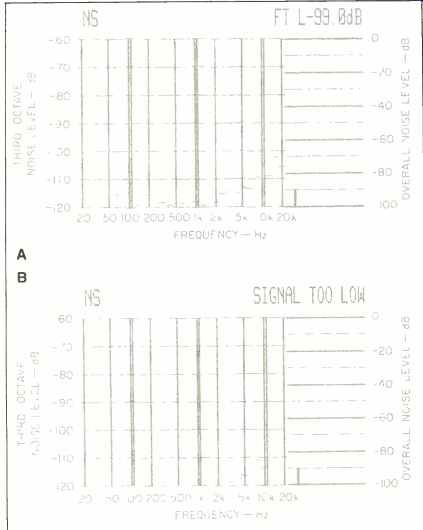
Fig. 4-S/N analysis, both unweighted (A) and A -weighted (8).
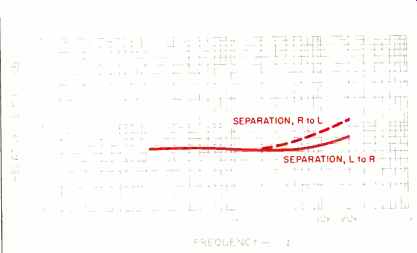
Fig. 5-Separation vs. frequency.
Measurements
Figure 1 shows the frequency response obtained at the output of each channel when playing back a swept-frequency test signal from below 20 Hz to above 20 kHz. At 20 kHz, I measured a relatively high attenuation from reference level of 1.5 dB on the left channel and 1.2 dB on the right. I suspect that Mission has allowed their analog filters to roll off the high end slightly in order to overcome some listeners' objections to the "harshness" attributed to some discs. The roll-off begins at around 10 kHz, which may explain why Mission's literature quotes frequency response as extending from 20 Hz to 20 kHz but doesn't append a tolerance to that specification. Harmonic distortion at 0-dB (maximum) re corded level was as low as claimed (0.003%) at around 250 Hz, but tended to rise somewhat at higher frequencies, as shown in Fig. 2. The dashed portion of the curve, above 10 kHz, is not a true measure of harmonic distortion, but rather denotes the increased influence of out-of-band "beats," one of which is clearly evident in the spectrum analysis photo of Fig. 3. For this test I played a 20 -kHz tone and ran the output of the CD player into a spectrum analyzer, sweeping the analyzer in a linear fashion from 0 Hz to 50 kHz.
Unweighted signal-to-noise ratio, analyzed in Fig. 4A, measured an exceptionally high 99.0 dB. When an A-weighting network was added in the measurement path, S/N increased to values that were actually too high for my instrumentation to record, as indicated in Fig. 4B.
Dynamic range, not specified by Mission, was a very high 114.0 dB. As in earlier tests, dynamic range is calculated by adding the THD for a -60 dB signal (expressed in dB rather than as a percentage) to 60 dB. With the PCM-7000, THD for a 1 -kHz test signal at -60 dB measured 0.2%, corresponding to -54.0 dB below the test-signal level. So, [... to be continued…]
(Audio magazine, Aug. 1987)
Also see:
Mission DAD-7000R Compact Disc Player (Dec. 1985)
Mod Squad Prism Compact Disc Player (Aug. 1988)
Micro Seiki CD-M1 Compact Disc Player (June 1984)
Musical Fidelity X-DAC D/A Converter (June 1997)
= = = =